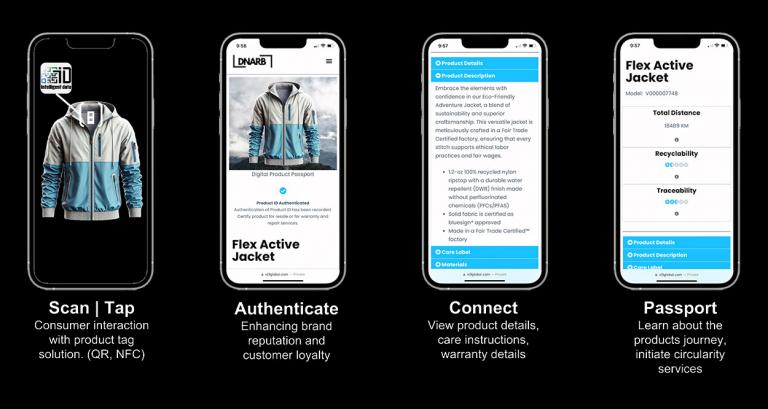Businesses continuously need working capital to generate better margins and higher revenue, which is true for no other sphere of business like the garment industry.
Working Capital of Your Apparel Company
While competition continues to make product differentiation imperative, major retailers and e-commerce companies focus on expanding their global footprint. As a result, working capital is critical for small and medium-sized enterprises (SMEs) to survive and thrive in the market. However, managing working capital grows more difficult by the day, as vendors demand payments from retailers more often and suppliers and customers grow more demanding.

Just like any organization, a clothing business needs working capital to purchase supplies, pay employees, and market and sell its products. Companies frequently go bankrupt because they have trouble managing their working capital. In this article, we’ll help you understand why it is important for a clothing business to have working capital and how you can manage your working capital effectively to have a significant edge over your competitors.
What is Working Capital?
Defined as the difference between a business’s current assets and current liabilities, working capital is the funding available to meet an organization’s current, short-term obligations.
Working Capital = Current Assets – Current Liabilities
Does an Apparel Business Need Working Capital?
Clothing businesses rely on their inventory. To sell an item and generate cash flow, clothing companies must first purchase the item from the manufacturer. Working capital is essential for an apparel company due to such initial expenditures. While replenishing inventory for the next phase can be accomplished using profits, working capital is vital for a retail company to not only get started but also during times of emergency.
It is important to have a detailed business plan before starting your business. This will help you understand the needs of your apparel business and secure the resources needed. If you have an offline store, you must have the capital for the initial line of products, rent, utilities, equipment, salaries, etc. The more financially secure your company is, the better the capital you will be able to acquire. You can opt for a working capital loan if you don’t have a seed investor to support your business.
While an apparel business does not need working capital to get on track, it is valuable for its operations. Due to the predicament of fashion trends, one season can have a positive cash flow, but that is not a promise for the future. Working capital investment will be a safety net to keep your business afloat during low revenue seasons. After inventory, marketing is one of the most expensive parts of an apparel business. In this social media era, you can use the working capital to the market, boost your business, and have an edge over your competitors.
Finally, if and when you decide to expand your company, it is extremely important to have working capital. Expanding a business means more inventory, retail stores, equipment, and hiring workers. To not let the growth of your business affect the company with negative cash flow, it is highly recommended that you secure working capital investment.
Ways of Intelligent Working Capital Management
Poor Stock Management Can Lead To Excess Inventory
There are places where you should take conventional approaches in a business. Inventory management is one such aspect. Good research and planning, conservative forecasts, and strong negotiation skills are all you need to manage inventory. Not only does excess inventory that you cannot sell take up space, but it also constrains capital. Fashion is ever-evolving and it is easy to be stuck with inventory that you cannot dispose of.
Cultivate a Cross-Departmental Approach
Regularly analyze your business by department. It is important to know what a department in your company is working on, the working capital within departments, etc. This will ensure reliable policies are in place and helps control the overall operational costs of the company.
Review Record Books
Your accountant or treasurer may be able to help you run your business efficiently, but they may not be as familiar as you with the operations of your company. Examining working capital from various perspectives is very important. Reviewing books from different angles can give you a better understanding of your company’s resource management. Not all start-ups can have account clerks or inventory staff. In the beginning, you or a dedicated employee can review the record books, propose adjustments, and find areas of concern.
Planning and Reassessment
As an SME, your objectives and plans should be updated regularly. There can be a lot on your plate in your day-to-day work, but monitoring the company’s progress and forecasting what is next in your pipeline is vital. Follow a reporting schedule to review your expenses and sales, and estimate the projections weekly. Focus on defining your metrics by delivering summaries continually to executives. Analytical measures will help you not stray away from your goals and thereby help your business stay profitable.
Managing Cash Flow During a Crisis
Since the pandemic, companies have realized how important effective working capital management is. In such events, review your finances and see how long you can last in a crisis and what financial options you have to keep you afloat. Reduce your variable costs and impose a hiring freeze. Reassess your capital investment plan and think about how you can have an edge over your competitors when the crisis is over. There can often be an influx of inventory for clothing companies. Create a strategy to sell your inventory. A company must have reserves kept aside for emergency supplies, rent, and other unforeseeable expenses. You can explore alternate business funding prospects to ensure a stable cash flow.
Conclusion
A positive cash flow after all expenses is a sign of a healthy business. If a company does not oversee cash flow, it can go bankrupt even if it makes a profit. During the various phases of a business, it can encounter significant obstacles in its financing operations. In these situations, companies limit variable cost expenditures, undergo retail and warehouse closures, and downsize.
Companies should consider the provision to improve working capital that does not require credit or other funding. The working capital management tips discussed in this article serve as a guide for examining how businesses must manage their working capital and pinpointing areas to run a clothing business with increased efficiency and reduced costs. With a good working capital going, it will help you serve your customers better, which in turn will help you achieve the most important goal for a business – sustain and increase your revenue.
Like this article? Then you must read this one: Marketing Tips for Your Jewelry Business.
* Written by Anna McKenzie
Editor’s Note: The opinions expressed here by Fashinnovation’s columnists are their own, not those of Fashinnovation.






